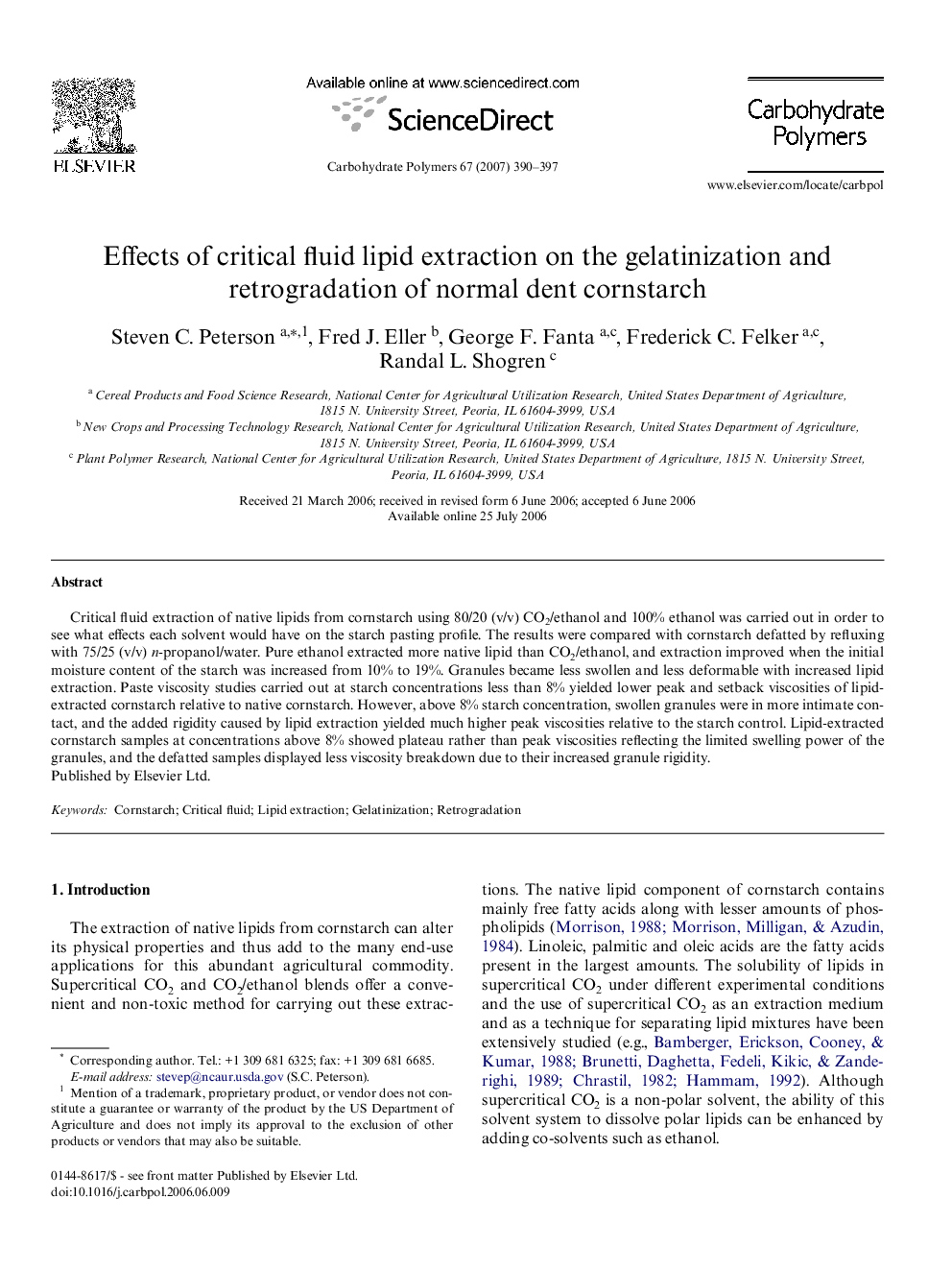| Article ID | Journal | Published Year | Pages | File Type |
|---|---|---|---|---|
| 1385638 | Carbohydrate Polymers | 2007 | 8 Pages |
Critical fluid extraction of native lipids from cornstarch using 80/20 (v/v) CO2/ethanol and 100% ethanol was carried out in order to see what effects each solvent would have on the starch pasting profile. The results were compared with cornstarch defatted by refluxing with 75/25 (v/v) n-propanol/water. Pure ethanol extracted more native lipid than CO2/ethanol, and extraction improved when the initial moisture content of the starch was increased from 10% to 19%. Granules became less swollen and less deformable with increased lipid extraction. Paste viscosity studies carried out at starch concentrations less than 8% yielded lower peak and setback viscosities of lipid-extracted cornstarch relative to native cornstarch. However, above 8% starch concentration, swollen granules were in more intimate contact, and the added rigidity caused by lipid extraction yielded much higher peak viscosities relative to the starch control. Lipid-extracted cornstarch samples at concentrations above 8% showed plateau rather than peak viscosities reflecting the limited swelling power of the granules, and the defatted samples displayed less viscosity breakdown due to their increased granule rigidity.
